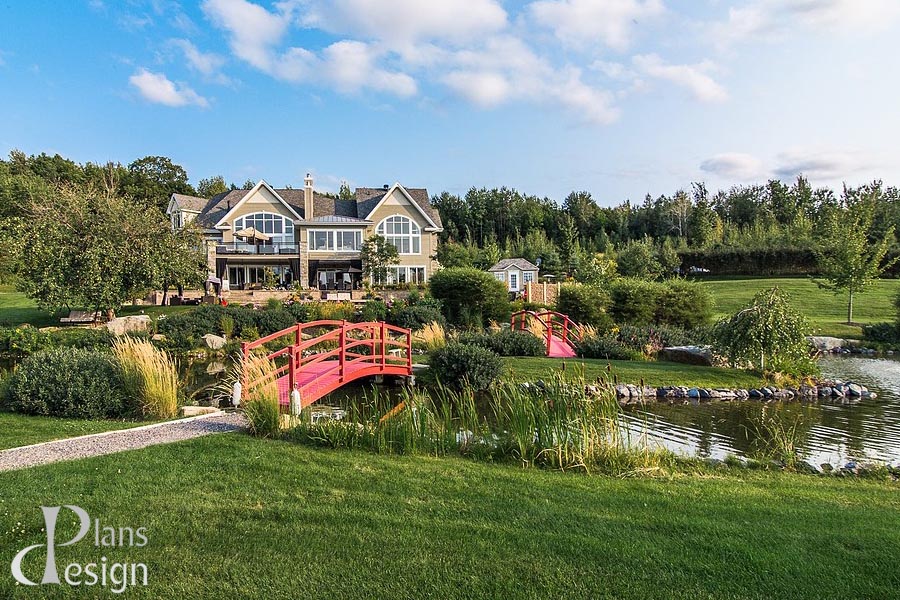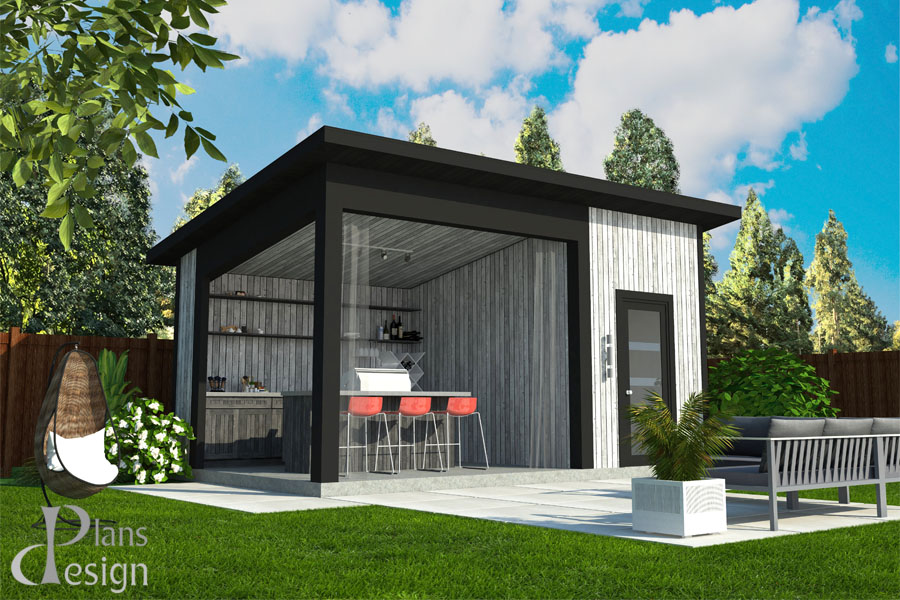Cottages, those quaint hideaways nestled in nature, are growing in popularity in Canada. Whether it’s as a vacation home, a rental investment or a haven away from the hustle and bustle of everyday life, cottages are attracting more and more Canadians. However, it all starts with one key element: the chalet plan. This guide will help you explore the different types of plans available, the factors to consider, and the benefits that such an investment can offer.
Table of Contents

The different types of chalet plans
Before you jump into choosing the perfect design, it’s essential to know the options available. Here is an overview of the main categories:
Modern chalets
If you like clean lines and minimalism, modern chalets are for you. These plans focus on:
- An open-concept living space for smooth circulation.
- Large windows with stunning views of the environment.
- Contemporary designs that highlight elegant materials such as glass or metal.
Rustic or traditional cottages
For those looking for a warm and friendly atmosphere, rustic cottages are ideal. Their distinguishing features include:
- Natural wood finishes, reminiscent of a classic style.
- A large stone fireplace for cocooning evenings.
- Warm interiors, perfect for family moments.
Four-season cottages
Adapted to a variety of Canadian climates, these cottages are designed to be functional year-round:
- Insulated walls guarantee an ideal temperature in all seasons.
- Weather-resistant materials for added durability.
- Efficient heating for harsh winters.
Compact cottages for small lots
If you have limited space, these plans maximize every square foot:
- Smart designs to save space.
- Multifunctional areas, such as a living room that doubles as a guest bedroom.
- A small footprint, ideal for smaller lots.
Chalets with mezzanine or integrated garage
- Mezzanine : Perfect for adding a bedroom or office space while offering an unobstructed view of the main living space.
- Built-in garage : Convenient for storing your ski equipment, bikes, or tools.
Factors to consider when choosing a chalet plan
When choosing a cottage plan, keep the following aspects in mind:
Budget
- Set a clear budget from the start. While smaller cottages typically cost less, custom options can increase the cost.
- Don’t forget to include maintenance, charges, and unexpected expenses.
Localization
- Choose a location according to your passions: near the ski slopes, a lake or a forest.
- Pay attention to local regulations in terms of zoning and building permits.
Waist
- Assess your needs: will your cottage be used for vacation purposes only or will it become a permanent residence?
- Count the number of rooms needed based on the number of occupants or visitors.
Design elements and architectural styles
The best chalet plan combines functionality and aesthetics. Here are some inseparable elements of good design:
- Open-concept layout : Ideal for creating a welcoming space and optimizing natural light.
- Natural materials : Wood, stone, and sustainable materials that blend into the landscape.
- Panoramic windows and skylights : To take full advantage of the magnificent views.
- Vaulted ceilings : Provide a sense of grandeur and allow for better ventilation.
- Eco-efficiency : Solar panels, double-glazed windows and reinforced insulation.
- Outdoor areas : Balconies and terraces to appreciate the beauty of nature.
The Benefits of Investing in a Cottage Plan
Investing in a well-designed cottage offers many advantages:
- Tailored to your needs : Bespoke designs allow you to create a space that reflects your lifestyle.
- Cost-effectiveness : Use your cottage as a second home or rent it out to generate income.
- Enduring value : Well-built cottages retain or increase their value over time.
- Natural Escape : A cottage is perfect for disconnecting and enjoying the tranquility.
- Flexibility : A good plan allows you to expand or modify spaces according to your future needs.
Consider the legal aspects
Particularly in Canada, it is crucial to consider the following:
- Building codes : These vary by province and municipality.
- Building permits : Get the necessary permissions before you start.
- Environmental regulations : Especially important near bodies of water or in protected areas.
Build your ideal home
Choosing the right chalet plan is more than an architectural decision: it’s an investment in your happiness and quality of life. With customizable designs, proven expertise, and sustainable solutions, we’re here to make your vision a reality.
Ready to get started? Contact us today for custom plans tailored to your unique needs.

Other articles you may be interested in!
Home Extension: Design Effective Plans and Transform Your Space
Designing house plans: 6 steps to perfect results!
Renovation plans: 7 essential steps to a successful project
Frequently asked questions
What are the different types of chalet plans available?
The main types are: modern cottages, rustic or traditional cottages, compact cottages, four-season cottages, and cottages with a mezzanine or built-in garage. Each has its advantages depending on lifestyle, budget and environment.
How much size should you choose for a comfortable chalet?
It depends on the use. For a family chalet, we recommend between 80 and 120 m². For a small weekend chalet, 40 to 70 m² can be enough if well optimized.
What are the criteria to consider when choosing the right chalet plan?
The most important are: the budget, the location of the land, the regulatory constraints, the size of the family, and the architectural style sought.
What is a 4-season chalet?
A 4-season chalet is designed to be lived in all year round, with better insulation, a suitable heating system and often a more robust structure than a 3-season chalet.
Can you customize an existing chalet plan?
Yes. Most plans can be modified : adding a garage, adapting to the slope of the land, enlarging, or modifying rooms according to your needs.
Do I need a permit to build a cottage in Quebec?
Yes, a building permit is required. You must also respect the zoning by-laws, the margins, the maximum surface areas, and sometimes the exterior appearance imposed by some municipalities.
What are the benefits of investing in a custom chalet plan?
A personalized plan allows you to have a space adapted to your needs, to optimize the resale value, to reduce future renovation costs, and to ensure better integration with the land.
Can I build a cottage on any land?
No. Some land is not buildable or has environmental constraints (wetlands, steep slopes, limited access). It is essential to validate with the municipality before buying or building.



